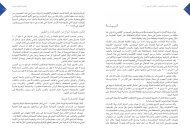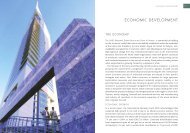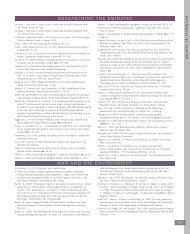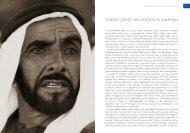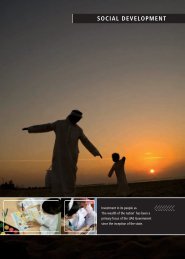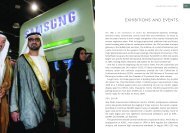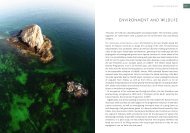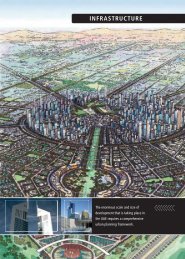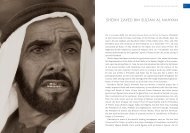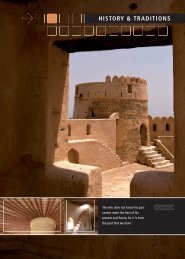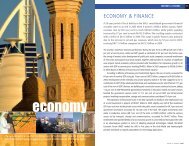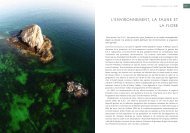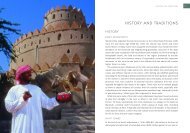UAE at a Glance - UAE Interact
UAE at a Glance - UAE Interact
UAE at a Glance - UAE Interact
You also want an ePaper? Increase the reach of your titles
YUMPU automatically turns print PDFs into web optimized ePapers that Google loves.
18<br />
<strong>UAE</strong> AT A GL ANCE 2008 @ www.uaeinteract.com/uaehistory<br />
c.5500 BC Evidence of extensive human occup<strong>at</strong>ion in <strong>UAE</strong>.<br />
5500–3000 BC Occup<strong>at</strong>ion by skilled groups of herders using finely made<br />
stone tools (so-called ‘Arabian bifacial tradition’).<br />
3000–2500 BC Hafit period – era of earliest collective burials first noted on<br />
the lower slopes of Jebel Hafit in the interior of Abu Dhabi.<br />
2500–2000 BC Umm al-Nar period – era of first oasis towns (e.g. <strong>at</strong> Hili, Tell<br />
Abraq, Bidiya, Kalba) domin<strong>at</strong>ed by large, circular fortresses; burial of the dead<br />
in round communal tombs; wide-ranging trade contact with Mesopotamia,<br />
Iran, Indus Valley, Baluchistan, Bactria (Afghanistan); first intensive use of<br />
copper resources of Hajar Mountains; area referred to as Magan in<br />
Mesopotamian sources.<br />
2000–l300 BC Wadi Suq period and L<strong>at</strong>e Bronze Age – an era which is characterised by fewer<br />
towns; change in burial customs to long, generally narrow<br />
collective tombs; close ties to Dilmun (Bahrain).<br />
1300–300 BC Iron Age – introduction of new irrig<strong>at</strong>ion technology in<br />
the form of falaj (pl. aflaj), subterranean galleries which<br />
led w<strong>at</strong>er from mountain aquifers to lower-lying oases and<br />
gardens; explosion of settlement; first use of iron; first<br />
writing, using South Arabian alphabet; contacts with Assyrian<br />
and Persian empires.<br />
300 BC–0 Mleiha period (or L<strong>at</strong>e Pre-Islamic A–B) – flourishing town <strong>at</strong> Mleiha;<br />
beginnings of local coinage; far-flung imports from Greece (black-glazed pottery),<br />
South Arabia (alabaster unguent jars); first use of the horse.<br />
0–250 AD Ed-Dur period (or l<strong>at</strong>e Pre-Islamic C–D) – flourishing towns <strong>at</strong> ed-Dur and Mleiha;<br />
extensive trade network along the Gulf linking up the Mediterranean, Syria and<br />
Mesopotamia with India; imports include Roman glass, coinage, brass; massive<br />
production of coinage by a ruler called Abi’el; first use of Aramaic in inscriptions<br />
from ed-Dur and Mleiha.<br />
240 AD Rise of the Sasanian dynasty in south-western Iran, conquest of most<br />
of eastern Arabia.<br />
6th/7th cent. AD Introduction of Christianity via contacts with south-western Iran and<br />
southern Mesopotamia; establishment of monastery on Sir Bani Yas by Nestorian<br />
Christian community; Sasanian garrisons in inner Oman and<br />
evidence for contact in the <strong>UAE</strong> shown by coins and ceramics from Kush<br />
(Ra’s al-Khaimah), Umm al-Qaiwain and Fujairah.<br />
630 AD Arrival of envoys from the Prophet Muhammad; conversion<br />
of the people to Islam.<br />
632 AD De<strong>at</strong>h of the Prophet Muhammad; outbreak of the ridda<br />
movement, a widespread rebellion against the teachings<br />
of Islam; disp<strong>at</strong>ch of Hudhayfah b. Mihsan by the Caliph<br />
Abu Bakr to quell rebellion of Laqit b. Malik Dhu <strong>at</strong>-Tag <strong>at</strong><br />
Dibba; major b<strong>at</strong>tle <strong>at</strong> Dibba, collapse of the rebels.



